Question
Some information about pollutants, their sources and their effects on the environment are shown
in Table 1.1.
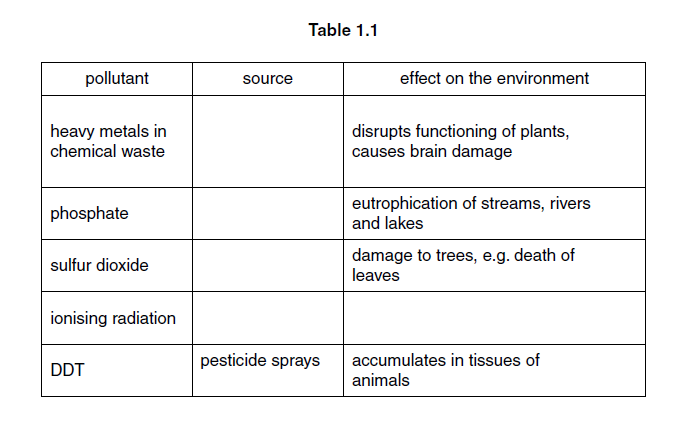
(a) Complete Table 1.1. [5]
(b) Explain what happens in streams, lakes and rivers when eutrophication occurs.
…………………………………………………………………………………………………………………………………
…………………………………………………………………………………………………………………………………
…………………………………………………………………………………………………………………………………
…………………………………………………………………………………………………………………………………
…………………………………………………………………………………………………………………………………
…………………………………………………………………………………………………………………………………
…………………………………………………………………………………………………………………………………
…………………………………………………………………………………………………………………………………
…………………………………………………………………………………………………………………………………
…………………………………………………………………………………………………………………………………
……………………………………………………………………………………………………………………………..[5]
(c) Sulfur dioxide dissolves in rain water to form acid rain.
Describe two measures that can be taken to reduce the effects of acid rain.
1 ………………………………………………………………………………………………………………………………
…………………………………………………………………………………………………………………………………
2 ………………………………………………………………………………………………………………………………
…………………………………………………………………………………………………………………………………
[2]
Answer/Explanation
Ans:
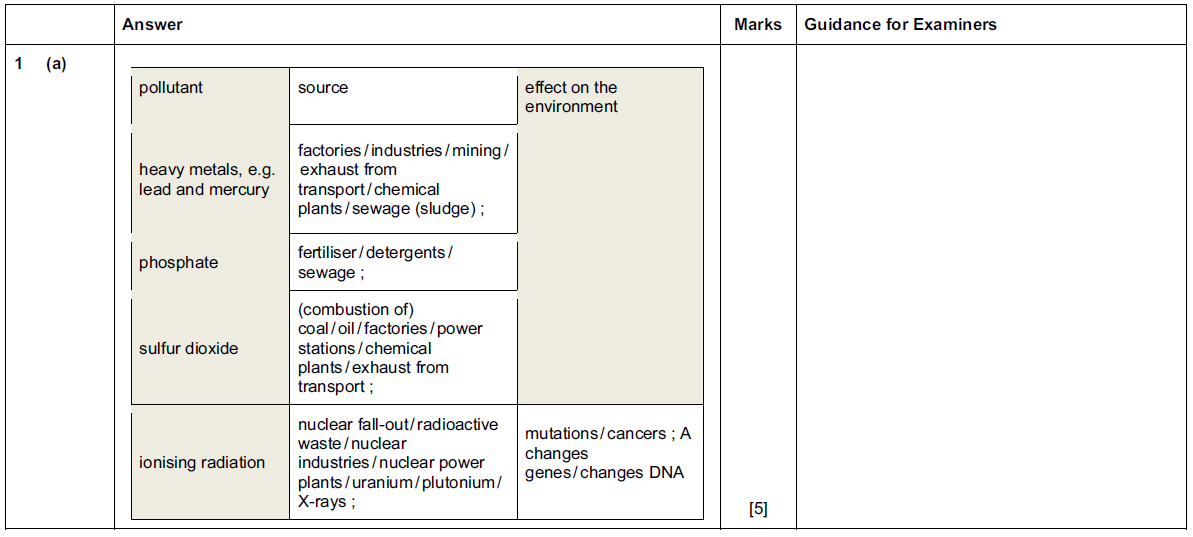
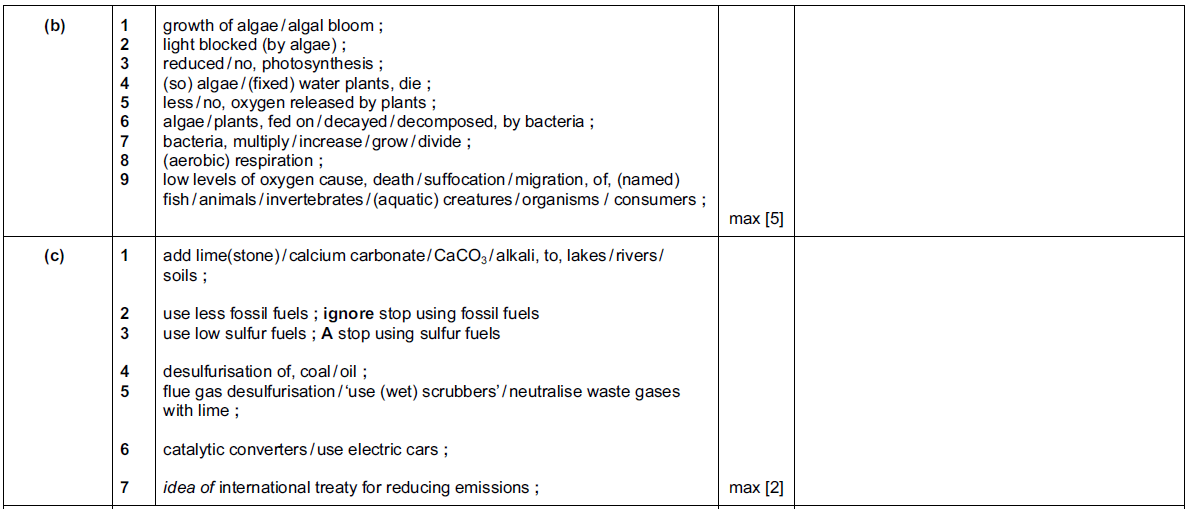
Question
(a) Fig. 5.1 is a photograph of a giant panda.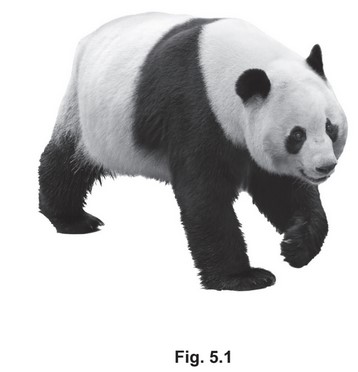
State the name of the vertebrate group that giant pandas belong to.
……………………………………………………………………………………………………………………………
(b) Giant pandas live in mountainous regions in central China.
Researchers estimated the numbers of giant pandas in these areas over several years.
The results are shown in Fig. 5.2.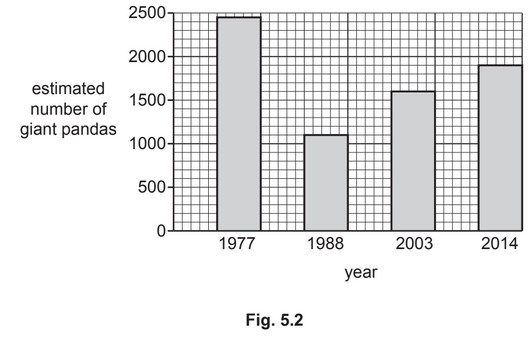
The population of giant pandas was at its lowest in 1988.
(i) State the estimated number of giant pandas in 1988.
…………………………………………………………………………………………………………………….
(ii) Calculate the change in population size of giant pandas between 1977 and 2014.
………………………………………………….
(c) In 1988 the population size became so low that giant pandas were considered an endangered
species.
Suggest reasons why species such as the giant panda become endangered.
(d) Giant pandas are no longer endangered due to successful conservation programmes.
Suggest how conservation programmes have helped to increase numbers of giant pandas.
Answer/Explanation
Answer:
(a) mammal(s) ;
(b)
(i) 1100 ;
(ii) (2450 – 1900) = 550 (giant pandas) ;
(c) climate change / e.g. of effect ;
habitat destruction ;
hunting / specimen collection ;
pollution / e.g. of ;
introduced species ;
disease ;
AVP ;; e.g. lack of food / natural disasters / war
/ (increased or new) predation
(d) monitoring / protecting, species ;
protecting habitat ;
education ;
captive breeding programmes ;
zoos / wildlife parks ;
AVP ;; e.g. providing food / legislation / laws to protect species
/ ban hunting
